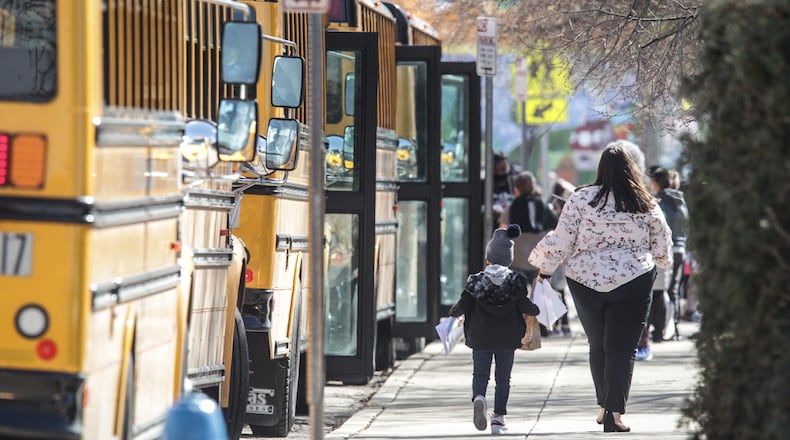Meanwhile DPS is projecting general fund revenues to drop from $278 million this year to $273 million each of the next two years, while expenditures are projected to rise from $285 million this year to $301 million and $319 million the next two years, with most of the bump coming from salary and benefit increases.
“Our district faces financial stress by Fiscal Year 2024 (the 23-24 school year),” said Abraha, who, like many school treasurers, acknowledged she is conservative in her budgeting. The Government Finance Officers Association recommends having 60 days worth of expenses in reserve. DPS currently has 129 days worth.
School Board President Mohamed Al-Hamdani voted, along with the rest of the board members, to approve the new financial forecast. But he cautioned that the large negative balances projected for summer 2024 ($28 million) and summer 2025 ($84 million) may not turn out that way, because it’s so difficult for the treasurer to predict what’s coming.
“When I first came here about four years ago, we were supposed to be in the negative today (based on projections then), but we’re not, because no treasurer can see five years into the future,” Al-Hamdani said. “Sometimes these negative numbers will scare people, but this may not come true if things change.”
Just comparing DPS’ new forecast to the one from six months ago shows an example of how schools often project their finances to be more dire than they end up. With just six weeks to go in the year, DPS’ 2021-22 revenues are now estimated to finish at $278.3 million, up $4.5 million from the November estimate. Full-year expenditures are projected at $285.2 million, $2.2 million lower than six months ago.
Abraha, Al-Hamdani, teachers union President David Romick and a host of others said the biggest uncertainty right now is the ongoing two-year budget debate in the state legislature.
A new budget will take effect July 1 and will determine how much state aid goes to public schools. The version of the state budget passed last month by the House would increase DPS’ state funding next year by $2.6 million. But the Senate has voiced multiple objections to that plan, so school funding remains in limbo.
While state funding makes up a relatively small percentage of the annual budget for richer districts, Dayton and other low-wealth districts rely heavily on money from Columbus. Because thousands of K-12 students in Dayton attend charter schools (or private schools via state vouchers), the debate over the funding model for those programs could also have a major effect on DPS.
Dayton Public Schools has already announced some major new projects to be funded by the $130 million in federal aid. A three-year, $17.7 million contract will pay First Student to bus Dayton’s charter and private school kids. And the district is hiring dozens of extra teachers to double its staffing at the youngest grade levels in DPS buildings, in an effort to create an academic turnaround.
There’s still uncertainty in many school districts on how ESSER funding will be used and what long-term impact it will make on overall budgets. But Abraha said not to expect DPS’ general fund budget issues to be solved by the windfall.
“We are planning which amounts we’re going to use and what stuff we’re going to use for ESSER,” Abraha said. “We know. That’s the reason I forecasted the way I forecasted.”
About the Author

